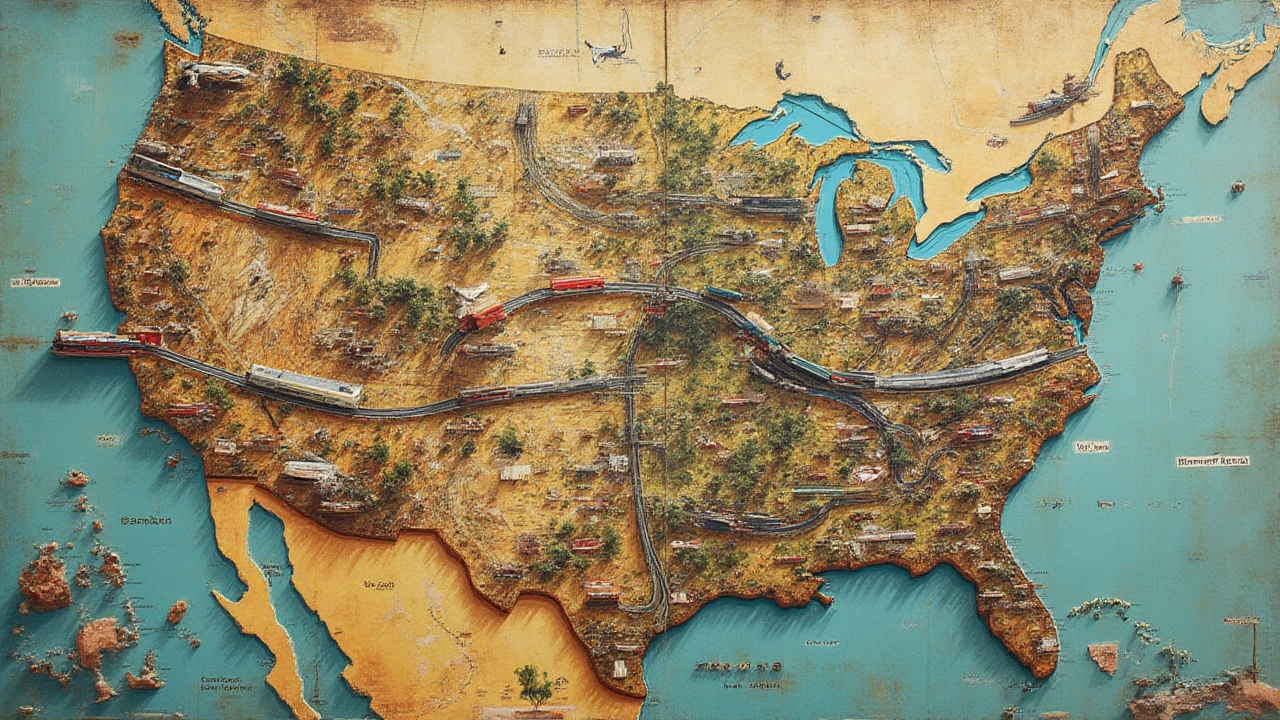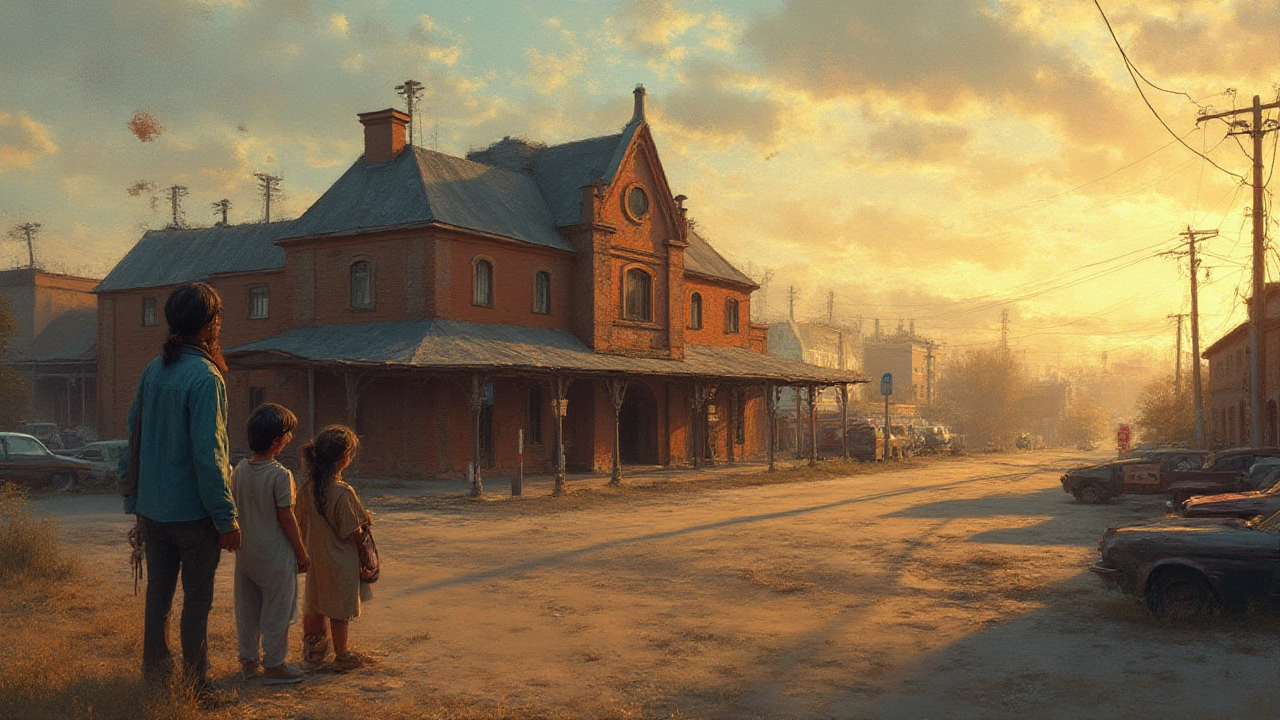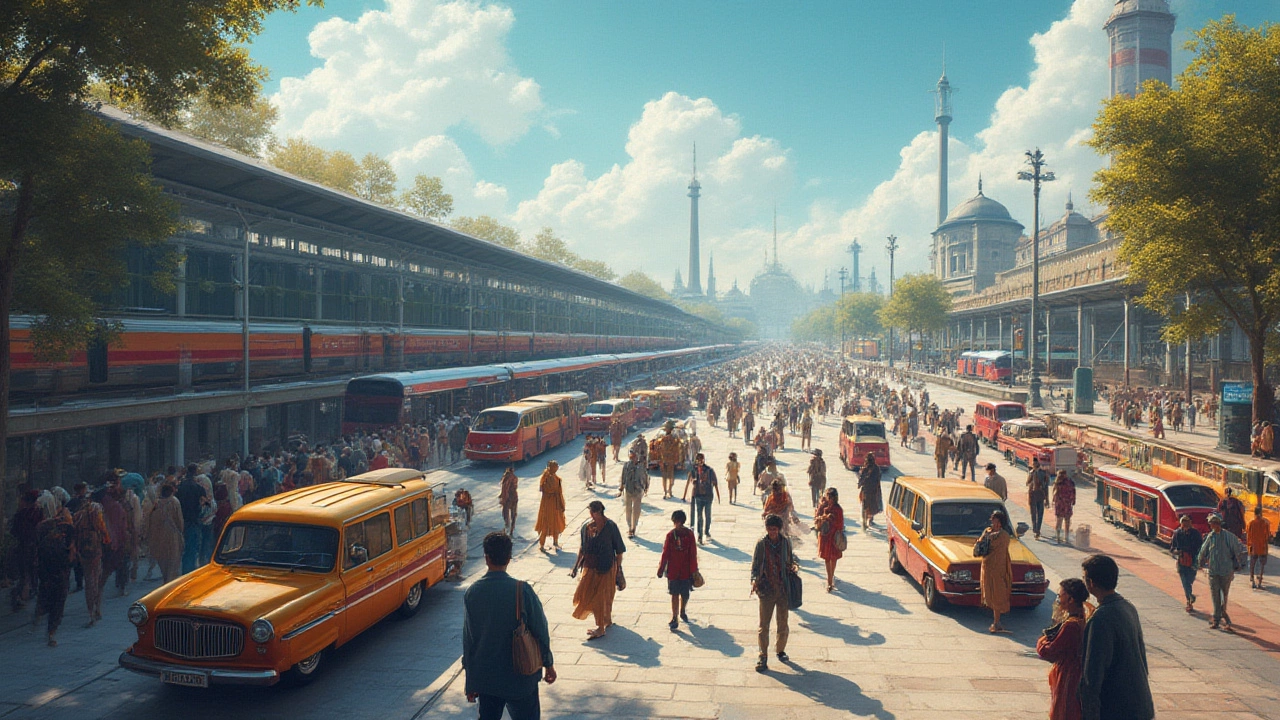Imagine boarding a train in Dallas, gliding past sunbaked plains, and disembarking in Chicago before the sun dips—that sounds romantic, right? Now consider the reality: that same trip might crawl along for almost 24 hours, arrive hours late, and still cost more than a flight. Meanwhile, in Europe or Japan, trains zip along at breakneck speeds on time, rail passes are a way of life, and major cities feel like neighbors. So, what happened to the American train dream? Well, it's not just about speed. The story is thick with wild decisions, stubborn culture, powerful lobbies, and a love affair with the open road. Buckle up, because train travel in the US is way more complicated than you think.
The American Car Culture and Its Impact on Trains
America’s obsession with cars isn’t just about convenience or a Chevy ad playing during the Super Bowl—it's hardwired into the country’s fabric. After World War II, politicians, city planners, and automakers pulled off one of the wildest transportation pivots in modern history. Interstate highways blazed across the country; suburbs sprawled in every direction. Suddenly, the car wasn’t just a way to get from A to B. It became a symbol of personal freedom, independence, and even status. Remember, people here grow up dreaming of their sweet sixteen set of wheels, not a rail pass.
By the late 1950s, when President Eisenhower signed the Federal-Aid Highway Act, the US pledged itself to over 41,000 miles of interstate roads. The government practically rolled out a red carpet for car owners: tax dollars built parking lots, highways, and more, while passenger train lines started vanishing from smaller towns. Ever notice how few US cities have proper central train stations anymore? They became parking lots or shopping malls. Meanwhile, oil lobbies and automakers pushed the government to ditch urban streetcars, too. It wasn’t a secret plot, but it was a perfect storm.
Fast-forward to modern times, some cities (think New York, Chicago, San Francisco) have held onto rail for commuting, but long-distance train rides? It’s mostly diehards and tourists. There’s just no comparison: today’s drivers can plot their own course, toss bags in the trunk, stop for roadside jerky, and never bother with schedules. Plus, in many states, public transit outside cities is patchy or non-existent. No wonder even Amtrak barely dents the national travel stats.

Railroads Built for Freight, Not People
Most Americans don’t realize the oddest part: the country actually has the world’s longest railroad network. But almost all those tracks are owned by freight giants, not passenger services. While Europe and Japan built dedicated lines for people, US railroad companies shifted focus in the 20th century to hauling containers, coal, grain, and goods. Every time you see a train rumbling by, count the endless line of shipping containers or tankers before spotting a passenger car sandwiched in between—they're rare.
Amtrak, the nation's main passenger train company since 1971, actually rents space on these freight rails. That means passenger trains have to give way every time a mile-long freight convoy lumbers along. Amtrak’s own stats show just 72% of their trains arrive on time, while in some regions, delays stretch for hours. In contrast, overseas high-speed trains run on exclusive, maintained rails, so you’re zipping from Paris to Lyon without dodging cargo.
| Country | High-Speed Rail (miles) | % Rail for Passenger Trains |
|---|---|---|
| United States | 28 (Acela Express) | 3% |
| France | 1,500+ | 66% |
| Japan | 2,000+ | 62% |
This ownership twist creates bizarre realities. Ever wonder why an Amtrak cross-country ride costs more than Spirit Airlines or Greyhound? Freight companies charge Amtrak for track usage and don’t prioritize passenger trains, which slows everything down and limits schedules. Even the famous “high-speed” Acela train in the Northeast—its top speed is technically 150 mph in brief sprints, but it spends most of its trip chugging at lower speeds stuck behind local or freight traffic and sharp curves. Nothing like Japan’s Shinkansen or France’s TGV, where trains cruise at 200 mph for long stretches.
What about trains between cities people want to travel between—say, Las Vegas to Los Angeles, or Dallas to Houston? These corridors either lack direct tracks or have freight traffic jammed on them. Proposed private high-speed lines, like the Brightline West project, seem exciting on paper, but almost every American train megaproject hits legal roadblocks, cost overruns, or gets stuck in endless reviews. Here, land rights, local opposition, and funding constraints turn rail dreams into bureaucratic quagmires.

Choices, Challenges, and Missed Chances
People who have tried Amtrak have stories—sometimes magical, sometimes maddening. There’s the joy of free Wi-Fi, big seats, sunset views, and no TSA security drama. But there’s also the groan-worthy moments: sudden delays, patchy food, stops in tiny towns instead of city centers, and sometimes, an aging train that smells like the 1980s. Even so, about 32 million passengers rolled with Amtrak in 2023. It sounds huge, until you realize that nearly 2 million people fly domestically every day in the US.
Affordability is another killer. Since most Americans can easily hop in a car, split gas, and drive, paying $200+ for a train seat can seem absurd—especially when children and families are involved. Add unpredictable timings, and trains don’t stand a chance when compared to budget airlines or interstate busses. Think about it: most New Yorkers ride the subway, and Bostonians love the T, but few folks from Kansas or Arizona have even set foot on a passenger train. Geography and planning play a huge role here, too. American cities are far apart and sprawling, not compact like European metropolises. The national layout just wasn’t designed for tight, interconnected rail.
Still, there are bright spots. The Northeast Corridor (Boston–New York–Philadelphia–Washington) is basically America’s rail superstar, thanks to dense cities and business travel. Some states, like California, have tried pouring billions into ambitious high-speed projects—with mixed results. Texas, Florida, and Nevada still dream of bullet trains. If any of these succeed, the game could change, especially as Gen Z and Millennials show less interest in driving everywhere. There’s growing pressure—think climate change, insane highway traffic, and rising fuel costs—pushing lawmakers to rethink the car-first approach. But it’s a slow burn, and revolutions don’t happen on rails overnight.
- If you want to try US train travel, choose popular corridors over cross-country treks—your odds of a smooth ride are way better.
- Book well in advance for cheaper Amtrak tickets, and consider a rail pass if you’re doing a multi-city trip.
- Packing snacks isn’t optional—Amtrak’s café menus are predictable and pricy, so a stash of treats goes a long way.
- Don’t bank on perfect timing if you have tight connections or appointments. US trains aren’t famous for punctuality outside the Northeast.
The wildest part? America once had thousands of daily passenger trains whisking kids to summer camp, sweethearts to the city, and dreamers to the coast. Today, the tracks are still there, silently waiting. Whether the US rekindles its rail romance depends on what people want from their journeys—a quick hop or a rolling adventure—and whether they’re willing to trade a steering wheel for a window seat again.
